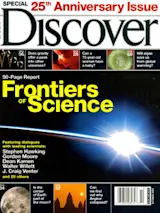My early physics education was very strange,” says theoretical physicist Lee Smolin. Strange, but effective. In the early 1970s, Smolin’s mentors at Hampshire College in Amherst, Massachusetts, flipped the usual order of courses, teaching quantum mechanics to freshmen and classic Newtonian regimes to upperclassmen. Smolin, a researcher at the Perimeter Institute for Theoretical Physics in Waterloo, Ontario, and a major contributor to loop quantum gravity theory, worries that the best and brightest students are turning to other disciplines because basic physics curricula are stodgy.
“In every other area, students are being exposed to things that are intellectually challenging and exciting because they are new,” he says. “The fact that we teach 300-year-old physics as introductory physics is just shameful.”
There is plenty of shame to go around in America’s science classrooms, and creative solutions are definitely in order. The number of science and engineering doctorates awarded at American universities has ...














